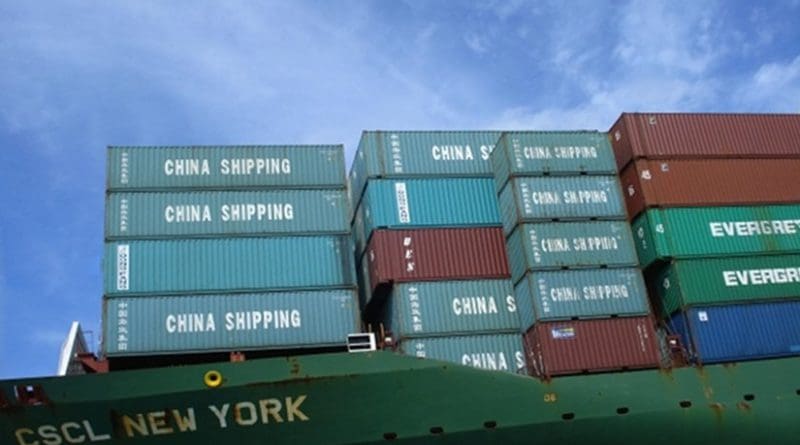Trump’s Trade War: A Report From The Front – OpEd
By Dean Baker
Donald Trump is bravely carrying on a trade war, not just with the bad guys with China, but with longtime allies like Canada and the European Union. Incredibly, the media just don’t seem that interested in reporting on the ongoing progress.
Last week the Commerce Department released trade data for August, and it got almost no attention whatsoever. The report showed that the trade deficit increased modestly from $54.0 billion in July to $54.9 billion in August. This is virtually identical to the deficit from August of 2018, so comparing these two months year over year, at least the trade deficit is not expanding.
Looking at a slightly bigger picture, in 2016, the last year of the Obama administration, the trade deficit was $518.8 billion, or 2.8 percent of GDP. The trade deficit expanded in both 2017 and 2018, reaching $638.2 billion in 2018, or 3.1 percent of GDP. It looks to come in slightly higher in 2019, with the deficit averaging $648.3 billion in the first half of 2019.
There are many factors behind the rise in the trade deficit. Growth in the U.S. has been somewhat faster than in major trading partners like the EU and Japan. The dollar has also risen in value, although most of that rise pre-dates Trump. But putting these aside, if Trump’s goal was to bring the trade deficit closer to balance, he’s been going the wrong way in the first two and half years of his administration.
If we look at his major nemeses in the international arena, there are not many signs of Trumpian success. Starting with China, in the last year of the Obama administration, the trade deficit in goods with China was $346.8 billion.[1] This had increased to $419.6 billion last year. It looks like the trade deficit is coming down somewhat in 2019, with the deficit for the first eight months at $231.6 billion, compared to just over $260.0 billion last year. Nonetheless, we are still likely to end up with a higher deficit with China in 2019 than we had in the last year of the Obama administration.
It is also worth remembering that it is difficult to calculate bilateral trade deficits with rigor. Suppose that iPhones, which had previously been assembled in China, are instead assembled in Thailand. If we imported the iPhone from China, the full value of the iPhone would have been recorded as an import from China, even though the assembly may have counted for less than 10 percent of the value added.
When the assembly shifts to Thailand, the reduction in our reported imports from China is equal to the full cost of the iPhones that we previously imported from China. The actual hit to China is just the small share of the value-added that is attributable to assembly.
If Trump’s battle with China is not going well, he seems to be doing even worse with other trade combatants. The trade deficit with Mexico was $63.3 billion in 2016. It hit $80.7 billion last year, and is virtually certain to come in even higher in 2019. The trade deficit with the European Union $146.7 billion in 2016. It had risen to $168.7 billion last year and is on a path to come in $10-$15 billion higher in 2019. The deficit with Canada rose from $11 billion in 2016 to $19.1 billion last year. It is likely to be roughly $1 billion higher in 2019.
In short, the trade war doesn’t look like it is going well for Donald Trump, at least by his chosen measure of success. If trade deficits mean other countries are ripping us off, then they are ripping us off considerably more under Trump than when Barack Obama was in the White House.
Notes:
[1] I’m just using goods, because these data are most readily available.
This column first appeared on Dean Baker’s “Beat the Press” blog.

